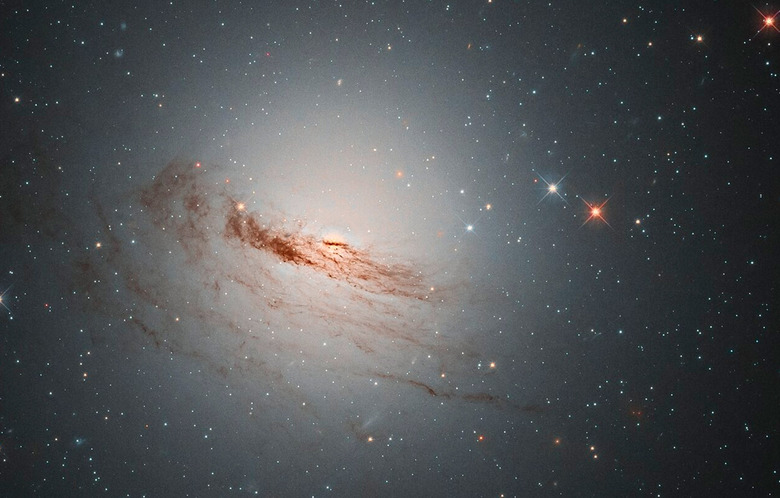This Dying Galaxy Is Strangely Beautiful
There is a beginning and an end to everything. We often measure time in terms of how long our species tend to live, and over that relatively short span it can seem like stars, planets, and galaxies live "forever." That's not true, of course, but since these objects and structures exist for so much longer than we do, it's difficult to imagine how something like a galaxy could die. Luckily we have scientists, and those scientists have ultra-powerful hardware capable of showing us what it looks like when these celestial objects reach the end of their lives, and the Hubble Space Telescope recently captured a gorgeous image of a galaxy that is truly in the throes of death.
NGC 1947 is a spiral galaxy — or at least it used to be. In an image captured by Hubble, we see little more than faint wisps of gas surrounding the galaxy's interior which is still packed with millions of stars. The galaxy is old and based on its current condition it's unlikely that it will exist for much longer.
Galaxies are born out of massive clouds of dust and gas. The material forms stars and planets and moons and everything else a galaxy will eventually contain. Over time, stars die. When those stars explode into supernovas, the material is set free and may eventually go on to form new stars, new planets, and so on.
It's a cycle that may repeat again and again and again, keeping a galaxy alive, but if the galaxy loses too much of its matter to space, it may struggle to form new stars and eventually fade into nothingness. NGC 1947 looks like it's headed down that road, with little free material to form new stars and a core of stars that probably won't be able to keep the cycle going for much longer.
The European Space Agency explains:
Residing around 40 million light-years away from Earth, this galaxy shows off its structure by backlighting its remaining faint gas and dust disc with millions of stars. In this picture, taken with the NASA/ESA Hubble Space Telescope, the faint remnants of the galaxy's spiral arms can still be made out in the stretched thin threads of dark gas encircling it. Without most of its star-forming material, it is unlikely that many new stars will be born within NGC 1947, leaving this galaxy to continue fading with time.
If our own galaxy, the Milky Way, weren't on a collision course with the Andromeda galaxy, this is the kind of fate that might befall it. Gradually losing its matter and energy with which to spawn new stars and eventually fading into nothing. Of course, we'll all be long gone by the time either of those things were to happen, so that's not something any of us really need to worry about.
